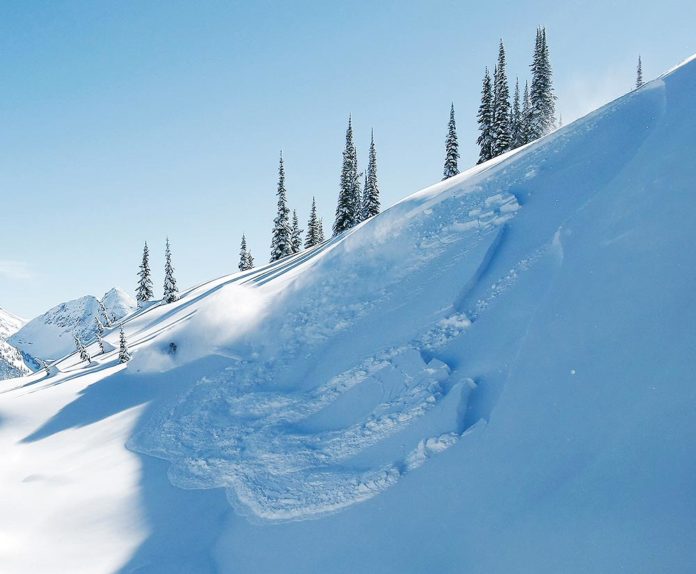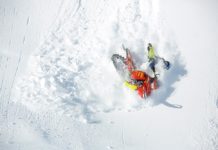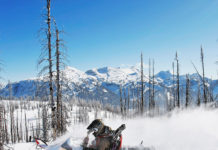1. Always go one at a time on or under an avalanche slope
The extra weight of having an additional rider on or under the slope is a common trigger of avalanches. Digging is the part of rescue that takes the longest. In North America when you have multiple complete burials, you have fatalities. This is due to the time it takes to uncover someone.
2. Never go above your partner
Get out of the way if below
If someone gets stuck on an avalanche slope, don’t help them or ride above them. Helping or riding above them is one of the major causes of avalanche fatalities. Valuable time is lost, even in a partial burial, if you have to dig yourself out and then try to help others. A common mistake with snowmobilers is having riders in the runout zone.
3. Have a plan
– Who’s first? Who’s last?
– What slope?
– Where are you stopping?
– What’s your escape route?
– Where are your islands of safety?
Most snowmobilers don’t have a plan due to lack of communication. Radios with ear buds can make all the difference. Having a plan prevents many of the common mistakes. Radio suggestion; BCA BC Link with microphone and speaker that can be attached to your pack shoulder strap. It can be heard while riding which makes communication easy for snowmobiling.
4. Stay in voice or visual contact
If you can’t see someone, you don’t know what has happened to them. If you are highmarking out of view from the rest of your group, they can’t make a quick response. Radios also help in this situation.
5. Alter your riding according to the danger
Check the avalanche report before riding. There’s never a day I don’t go riding because of the avalanche danger, but every day I ride, where I go is determined by the avalanche report, observations and stability analysis. In the last three years in the U.S. 53% of the snowmobile Avalanche fatalities have occurred on high danger days. We should alter our riding according to the danger.
Text Mike Duffy avalanche1.com
Photo Hans Wardell





